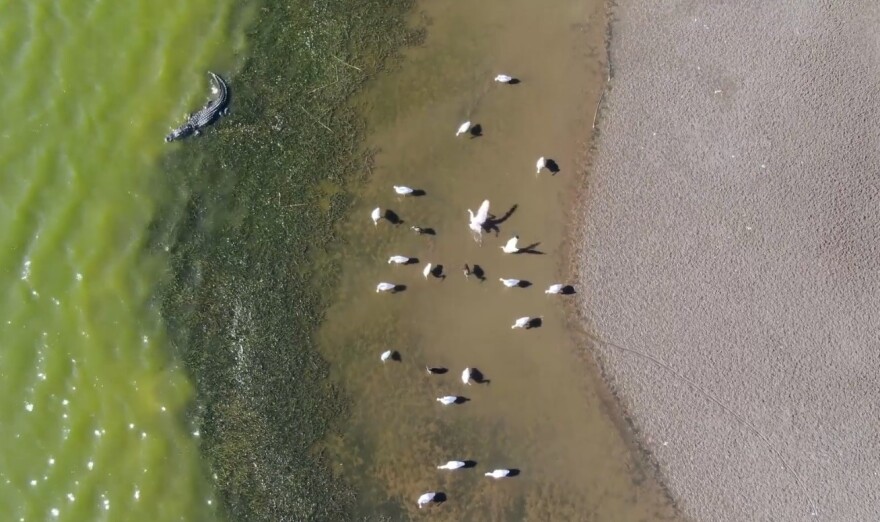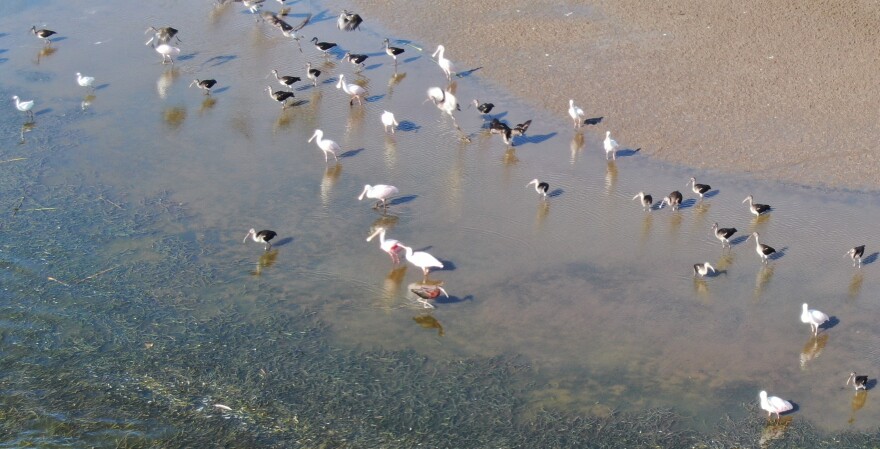Mountain biking trails at Alafia River State Park have names like the Scorpion, Gwazi and Moonscape, which is a good name for a place that was once a phosphate mine. But riding down these tree-covered hills that look nothing like the rest of Florida, you'd never know that.
Bikers cruise down a hill on a recent weekend before hitting the newly reopened Gwazi Berm. It's an undulating semicircle of wooden planks that riders attack at the bottom of the hill. Having trails here named after rides at Busch Gardens isn't accidental.
There's the Gravitron, Thunder Ridge, Twisted Sister and the double-black-diamond Frankenstairs. Do not attempt that one unless you are a seasoned mountain biker, or you might end up flipping head over heels.
Just like Ray Johnson of Lutz.
Even though he's a veteran biker, Johnson was temporarily paralyzed from the neck down after crashing on the Roller Coaster trail. Twenty minutes later, he stood up and walked his bike out.
"It's not what's expected of Florida. People think, oh there's no hills, there's no nothing," Johnson said. "But all this single track out here — it's just phenomenal."

Twenty-five years ago, this was nothing but a mined-out phosphate wasteland donated to the state by IMC-Agrico. It was closed before 1975, when state regulations mandated that mines had to be reclaimed — put into a semblance of its original condition.
Mountain bikers stepped in when they saw this place of steep hills, gashes and flying leaps as a rare landscape in Florida.
"Think about the phosphate mines. How deep they dug. And then how high the hills are," Johnson said. "So, there's different grades of difficulty. You have your blue, black diamond and then double black diamond."
Lucy Lemus manages the University Bike Shop outlet at the park. She's been riding out here for 10 years.
"The cool thing about this place is that it's not reclaimed," she said during a recent tour of the park. "So a lot of the other mines, they've actually flattened them out."
Lemus calls this an "epic" track.
"I've gone as far as Italy or Phoenix, Arizona, and then I come back home. This is amazing," she said. "It's an undulating pump track. So every little down you've got, you've got an up coming up. And it's a high-intensity interval kind of workout, versus a meandering cardio."
The upheaval in the landscape here is illustrated by the abundance of shark teeth found here. Lemus says she's even found a megalodon tooth — which was at the bottom of the sea millions of years ago.

But old phosphate mines do come with some hidden dangers. The churning of the ground here exposed slightly radioactive elements, mostly uranium and radium. Radium decays to radon, a radioactive gas that's dissipated in the open air.
Lemus wonders — since she's out here just about every day — whether to buy a Geiger counter.
"Is there any byproducts that are still kind of left within the soil? If I brought one of those meters out here, is there any radioactive particles still left over?" she asked.
Radon gas is one of the reasons you can only build on a former phosphate mine using construction techniques that mitigate radon. Examples of these are the Eaglebrook subdivision in Lakeland and Streamsong, an exclusive golf resort in southern Polk County.
Another former mine in Hardee County has become a public campground. But they typically become cattle pasture, or undeveloped parks. There are 27 phosphate mines in Florida, covering nearly half a million acres. Nine mines are still active, and another nine are fully reclaimed.
Roseate Spoonbill Heaven
And one in the heart of the central Florida phosphate mining region known as “Bone Valley” has had a different fate. Mosaic Co.'s Hookers Prairie sits just south of the county seat of Bartow.
As we drive along a dirt berm, to the right of me is a massive phosphate processing plant. A pond tinged dark green is used for phosphate waste water. On the other side of the berm, bright pink birds rule the sky.

When he was first driving through the mine, Mosaic's lead ecologist, Raoul Boughdon, couldn't believe what he saw.
"I think it was more exciting. It was like, is that all roseate spoonbills all sitting over there?" he said. "Because I've never seen so many all perched in trees. There was about 30 or 40 all over the rookeries."
The Australian native tells people he's from the deep South. He says he's been fascinated by central Florida's ecology since moving here about 20 years ago.
"There's literally thousands — maybe tens of thousands — of white ibis here," he said. "Other than that, there's all your egrets, snowy egrets, great egrets. There's green heron, there's glossy ibis, and those are all birds here that are breeding."
This is the first year that roseate spoonbills have been spotted nesting here, although they have been coming to the pond to feed for years.
Spoonbills are considered an imperiled species by the State of Florida. There were only a handful of them left in the state by the 1940s, since their bright plumage were prime pickings for hat wearers of the early 20th century.

Ironically, Boughdon says the thousands of acres around the prairie that have been mined offer some protection for these somewhat skittish species.
"This is probably one of the most isolated, least visited wetlands in the system, because it is on Mosaic land," he said. "So it's protected from lots of recreational activities. It's a wilderness really. It's a natural place now."
Mark Rachal of Audubon Florida manages the state's largest roseate spoonbill rookery, on some islands in Tampa Bay called Alafia Bank.
He recently toured Mosaic’s Hooker’s Prairies to see the rookery.
"We have seen a rebound in the numbers throughout Florida, and at inland sites like this, and coastal sites," Rachal said. "So they are a rare bird, but they're doing better, especially at sites like this where they can sit down and raise their families."
Boughdon says phosphate mining here started in the mid 1980s, and since mining ceased in 2014, the site has gradually been reclaimed.
"As an ecologist, some of these sorts of places that are actually protected from humans are becoming more and more important to the wildlife than they ever were before," Boughdon said. "Keeping pristine areas is fantastic, but we still need to protect everything else that we can."













